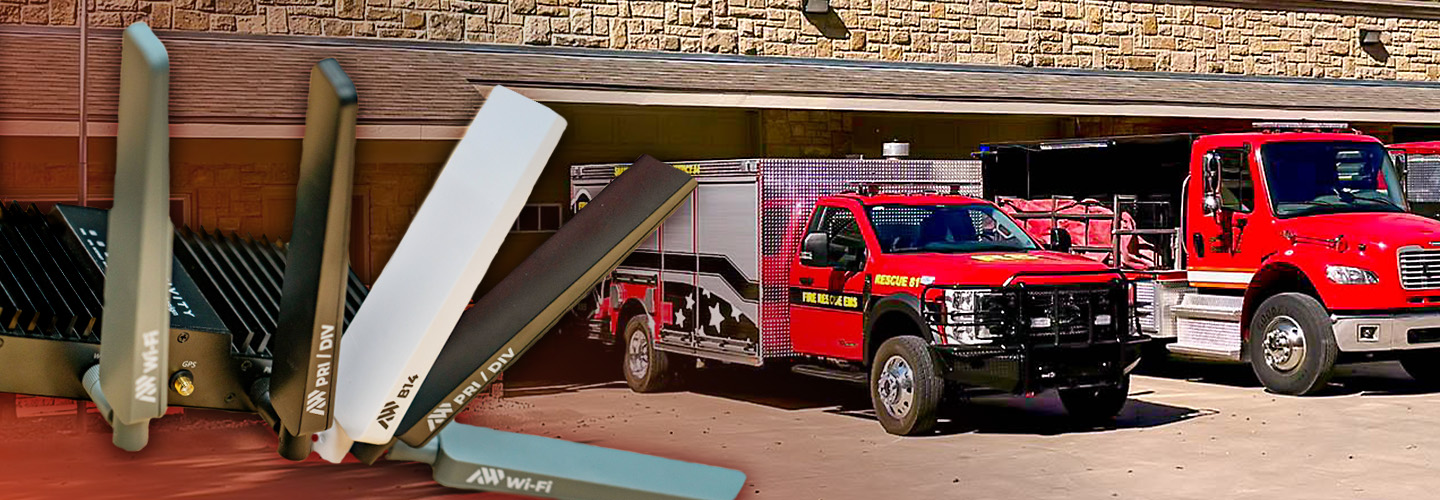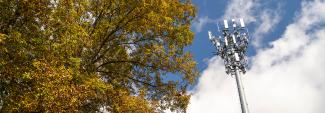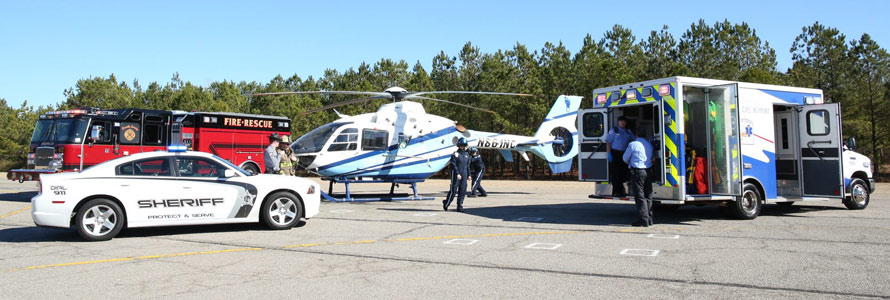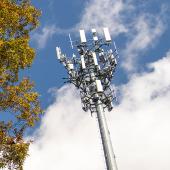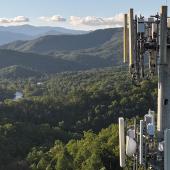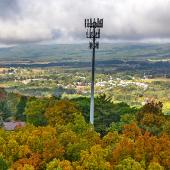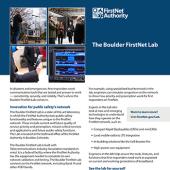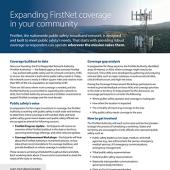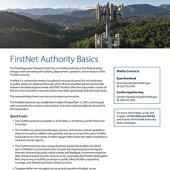March to mid-May is busy season for Shawnee County Fire District #4, located in northeastern Kansas. Our agency is made up of 20 to 30 volunteers who give their time responding to approximately 225 calls per year. We provide fire suppression, emergency medical services, and rescue services to 112 square miles of our county.
Grass fires are the most common call that we get, making up about 40% of our call volume. We’re seeing these fires getting bigger and faster. It’s important that we’re able to communicate and share information to contain these fires and protect our residents.
When I became the fire chief in 2022, I sat down with my officers and with other chiefs in the area to discuss our challenges and needs. The things I heard most often were the lack of cell coverage in our rural area and the delay in rolling out new technologies because of this limited coverage.
So, we got to work to address these issues.
Communicating across county agencies
Like many emergency communications centers across the country, our dispatchers were overworked and understaffed. That hindered their ability to share information with responders in the field. They put notes into the system as they took a call, but because we could not access that system reliably, we rarely saw those notes. We also experienced issues with our radios getting bogged down because every individual responding to a call would voice their status over the radio.
As a county, we made the switch to a mobile app that has direct access to the county’s computer-aided dispatch [CAD] system that helps alleviate these problems. Dispatchers type call information into the notes, and those notes are sent directly to our responders’ screens. There is no need to share every detail by voice communications anymore. As our crews drive to an incident, the passenger in the apparatus can read patient notes. The system also has a map that can guide our crews to the more rural areas, and we can use the map to track the crews responding to incidents.
This CAD system has many benefits — but there was one major hurdle that we had to clear before we were able to take advantage of all it had to offer: broadband connectivity.
Out of the 112 square miles that Shawnee County Fire District #4 covers, we have reliable cell coverage in about 30 square miles. If the calls we receive are in this area, we can easily connect to the CAD system and reap the benefits of accessing and sharing data.
Emergencies are rarely convenient, though, and I knew I needed to look for a solution to extend access to the CAD system throughout our response area.
Connectivity at network’s edge
In the aftermath of September 11, 2001, a federal agency known as the First Responder Network Authority was established to oversee the creation of a nationwide broadband network for first responders. The FirstNet network is the result of those efforts. FirstNet has access to 20 megahertz of broadband spectrum allocated by Congress specifically for public safety, known as Band 14.
Band 14 has many unique benefits. The spectrum can be locked down so only verified first responders can access it — something that can be incredibly useful when commercial networks are overwhelmed. It can also transmit increased signal via High Power User Equipment, or HPUE. Band 14 on FirstNet is the only band in the United States operating with HPUE. HPUE can boost signal power up to six times the normal strength at the edge of the network. This makes it a great solution for responders operating in rural areas.
In Shawnee County, this was the solution we needed. We’ve installed HPUE and routers in several of our apparatus. This setup allows our responders to stay connected to broadband on their phones and tablets. I have not found a place in the county where we are not able to connect. We went from having no information to being able to access all of the information on a call thanks to this setup.
Mutual aid, mutual benefit
Even though our dispatch center is still short-staffed, these technologies have lessened the burden on our dispatchers. We don’t need them to give us every bit of information, and we don’t need them to monitor our radio chatter constantly. We can access the data we need at our fingertips before we respond, when we’re en route, or while we’re on scene.
And I know there is more to come. We’re going to see more opportunities to incorporate technology into public safety. Drones, for example, are becoming more popular for agencies. The ability to live-stream footage from a drone back to responders is huge in keeping everyone safe and responding appropriately. Our neighboring agencies have drone programs, and there have been several instances where we’re able to keep those drones connected on the edge of the network using HPUE. It’s as simple as driving one of our apparatus with HPUE to their location, and they can connect their drones to the router via Wi-Fi.
Safety, security, peace of mind
As a chief, I worry less about my crews now because I have eyes on them and I can contact them if I need to. I can see them moving to calls. They have secure access to the information they need. And they can communicate with other responding agencies.
In this day and age, connectivity is critical. Having reliable connectivity across the county has made a tremendous positive impact in Shawnee County, and it makes us better prepared to help those in need.


